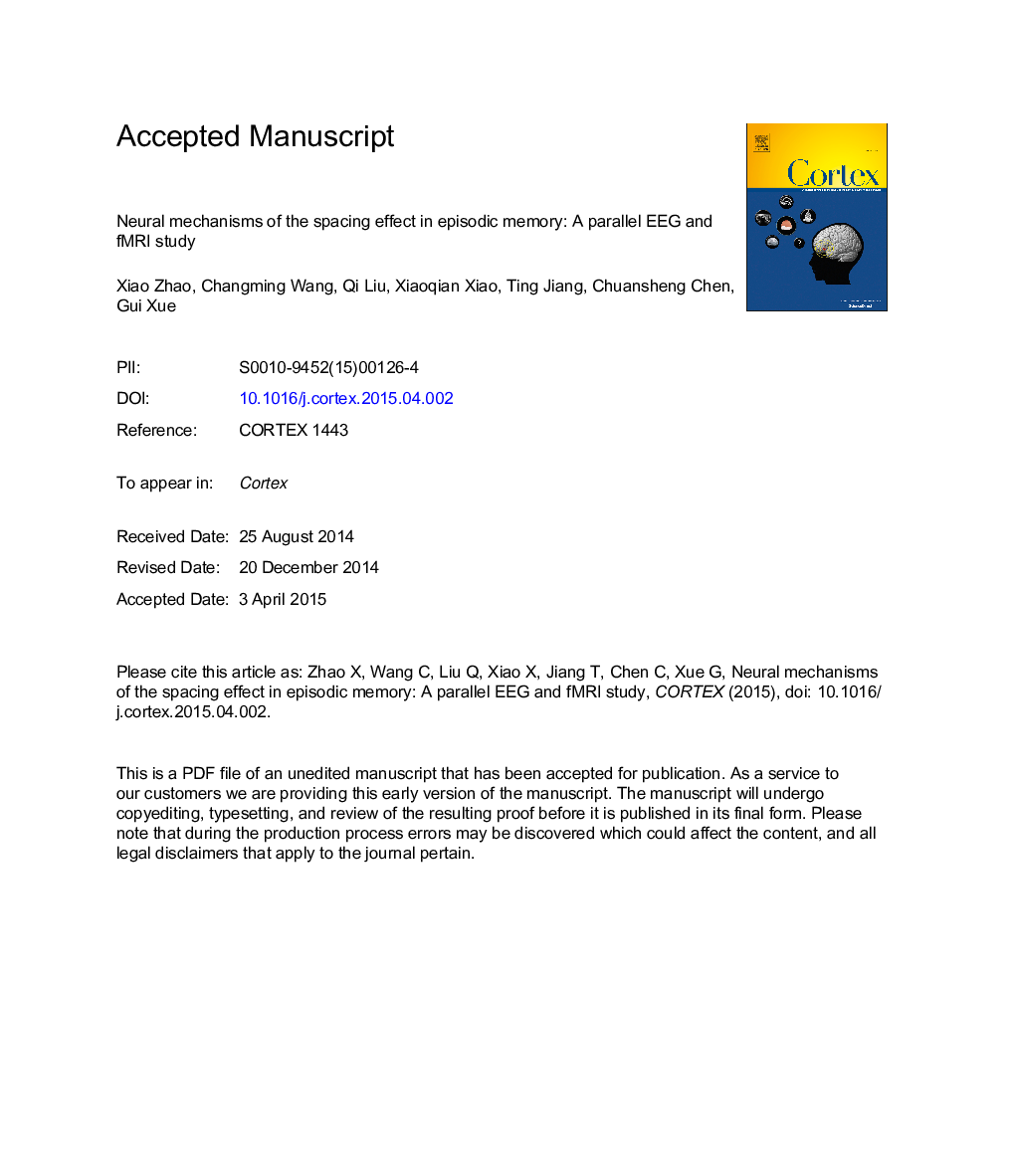| Article ID | Journal | Published Year | Pages | File Type |
|---|---|---|---|---|
| 7314161 | Cortex | 2015 | 56 Pages |
Abstract
Although behavioral studies have consistently reported the spacing effect in learning, its cognitive and neural mechanisms are still not clearly elucidated. According to the storage/retrieval strength framework proposed by Bjork (1999; Bjork & Bjork, 1992), which was built on the study-phase retrieval hypothesis and the deficient processing hypothesis, the spacing effect is achieved by reducing memomtary retrieval strength during subsequent repetitions and thus enhancing storage strength. The present study tested this hypothesis with parallel fMRI and EEG. Participants were asked to study 180 words that were repeated three times, with half of the words having an inter-repetition-lag of 1-3 words (i.e., massed learning) and the other half an inter-repetition-lag of 25-35 words (i.e., spaced learning). An unexpected recognition test was administered 24Â h after learning. Consistent with Bjork's hypothesis, the EEG data suggested that spaced learning was associated with weaker retrieval strength, as indicated by a reduced familiarity effect in frontal N400. Meanwhile, spaced learning effectively enhanced the encoding process and thus led to stronger storage strength, as indicated by greater fMRI responses during learning in brain regions whose activities were associated with subsequent memory. Interestingly, no direct association was found between repetition priming and episodic memory. These results furthered our understanding of the neural mechanisms underlying the spacing effect.
Related Topics
Life Sciences
Neuroscience
Behavioral Neuroscience
Authors
Xiao Zhao, Changming Wang, Qi Liu, Xiaoqian Xiao, Ting Jiang, Chuansheng Chen, Gui Xue,
